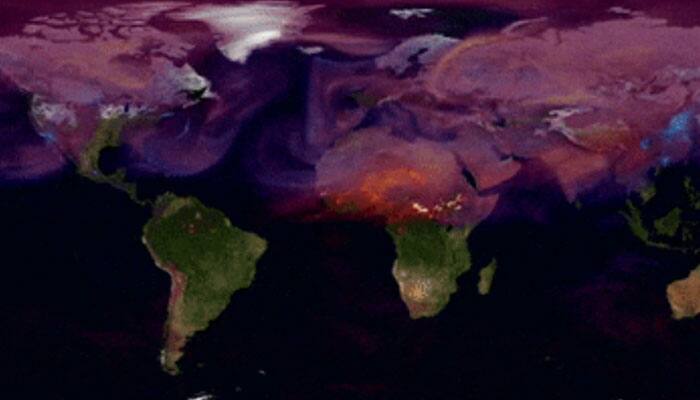Washington: Earth, the place we live, is heating up because of too much carbon dioxide (CO2) in the atmosphere due to human activities.
Also Read: Website for Paris climate change summit launched by Prakash Javadekar
So far, half of all all carbon dioxide emissions from the burning of fossil fuels and other sources are getting absorbed by the land plants and ocean.
However, scientists are not sure whether Earth's oceans, forests and land ecosystems will maintain their capacity to absorb about half of all human-produced carbon dioxide emissions in the future.
Forest and other land ecosystems are also changing in response to a warmer world. Some ecosystems -- such as thawing permafrost in the Arctic and fire-prone forests -- could begin emitting more carbon than they currently absorb.
Also Read: Cacao tree will survive climate change, says study
Since the Industrial Revolution, atmospheric carbon levels have increased 2.5 times to more than 400 parts per million at present, said Michael Freilich, director of NASA's Earth Science Division, in a call with reporters Thursday. That is higher than it has been in the last 400,000 years.
These emissions are the subject of a United Nations climate conference in Paris later this month.
“NASA is at the forefront of scientific understanding in this area, bringing together advanced measurement technologies, focused field experiments, and cutting-edge research to reveal how carbon moves around the planet and changes our climate,” he said.
“Understanding how the planet responds to human carbon emissions and increasing atmospheric CO2 levels will position our nation to take advantage of the opportunities and face the challenges that climate changes present.”
Freilich and his colleagues at NASA and other institutions discussed the need for more research into how the planet absorbs greenhouse gases. They also discussed the ongoing analysis of the first year-plus of satellite data from Orbiting Carbon Observatory-2 -- NASA's first satellite designed to measure carbon dioxide from the top of Earth's atmosphere to its surface, according to a NASA press release.
“The land and the ocean are really doing us a big favor,” said Lesley Ott, an atmospheric scientist in the Global Modeling and Assimilation Office at NASA's Goddard Space Flight Center in Greenbelt, Maryland, in a press release. “Otherwise you would have carbon building up in the atmosphere twice as fast as it does now.”
The agency has been working on several projects in an attempt to get an accurate assessment of the carbon cycle around the globe. Using satellite data, instruments and field research, NASA also hope they will be able to provide policymakers with more accurate data in the future.
















